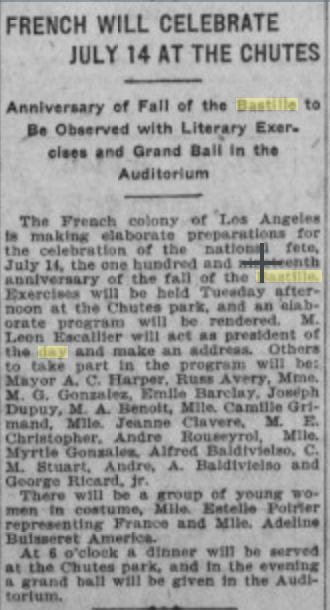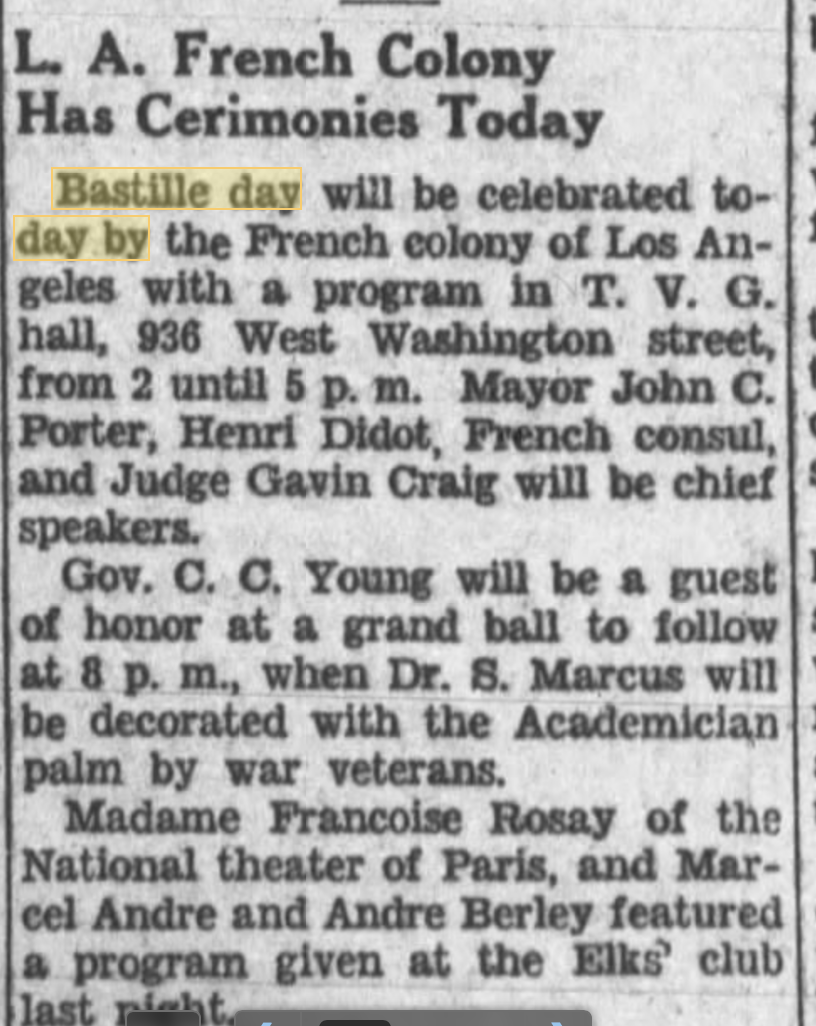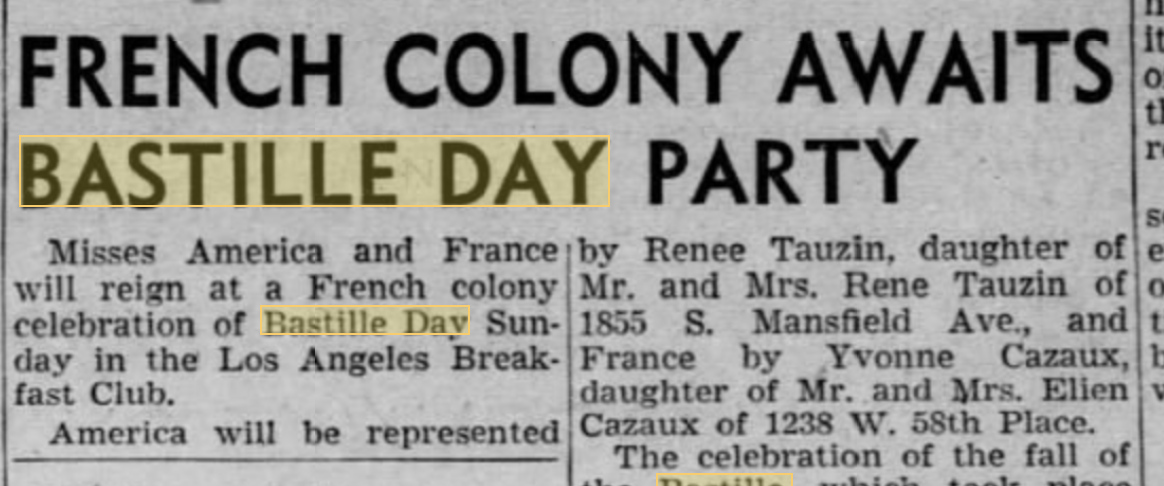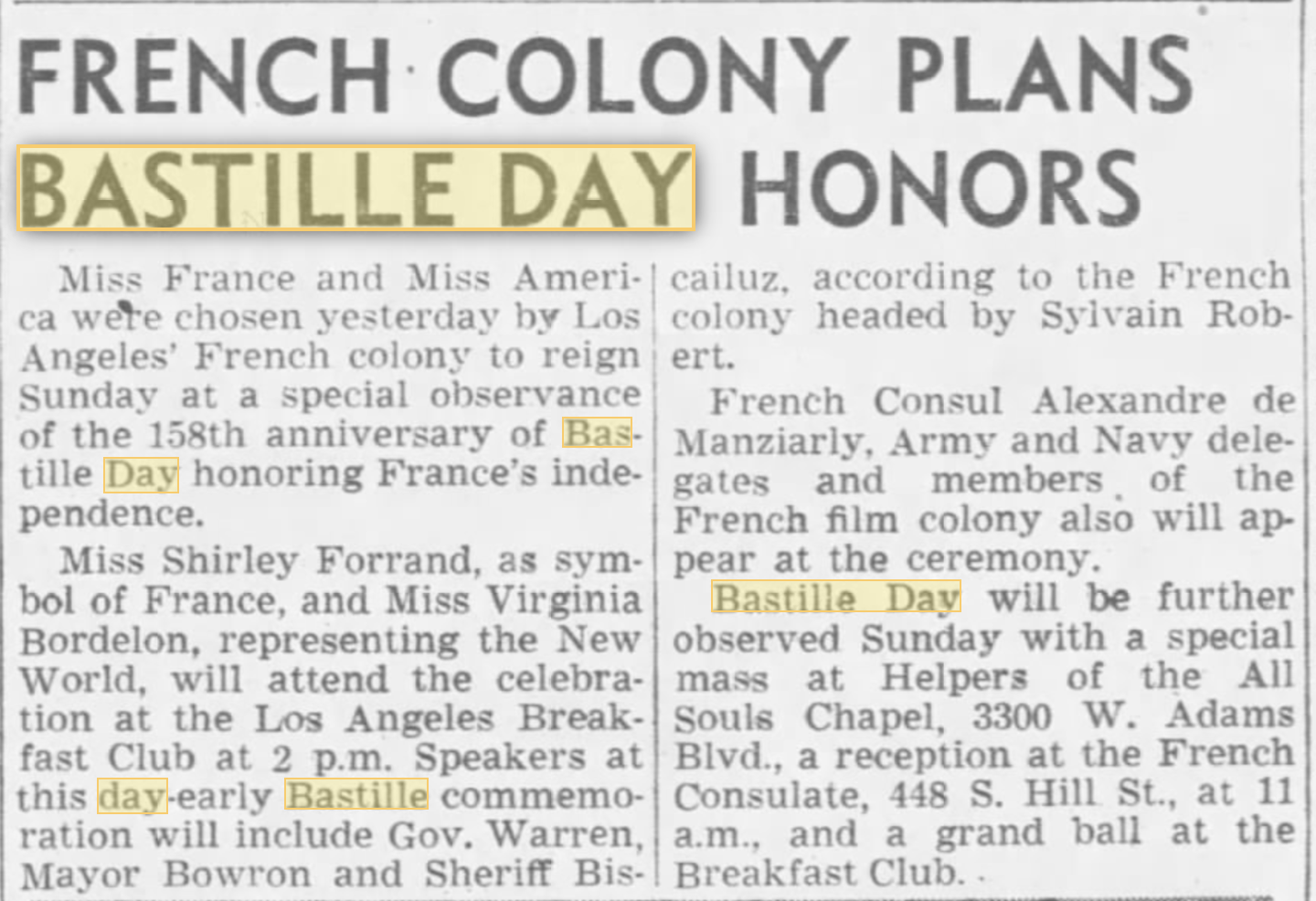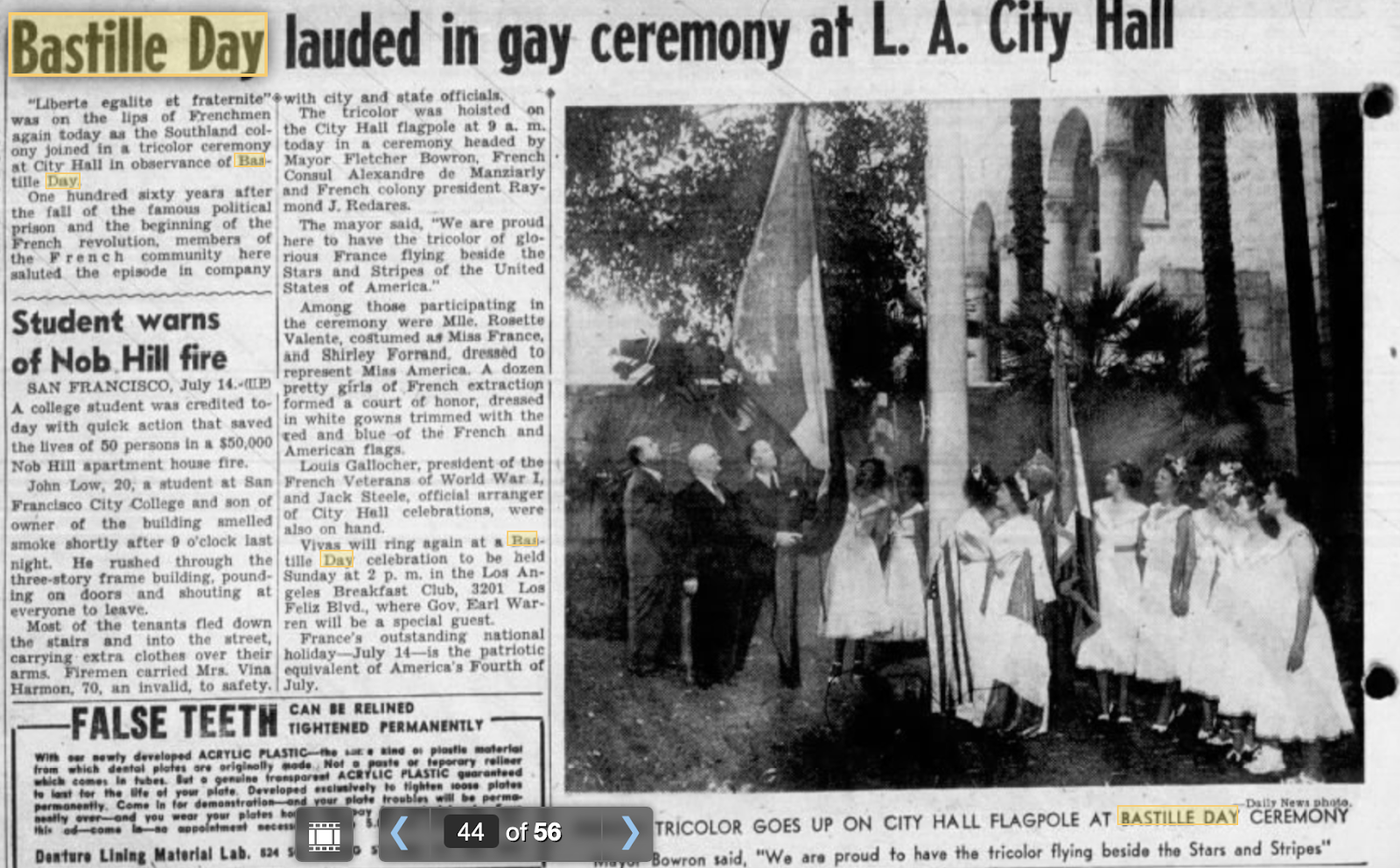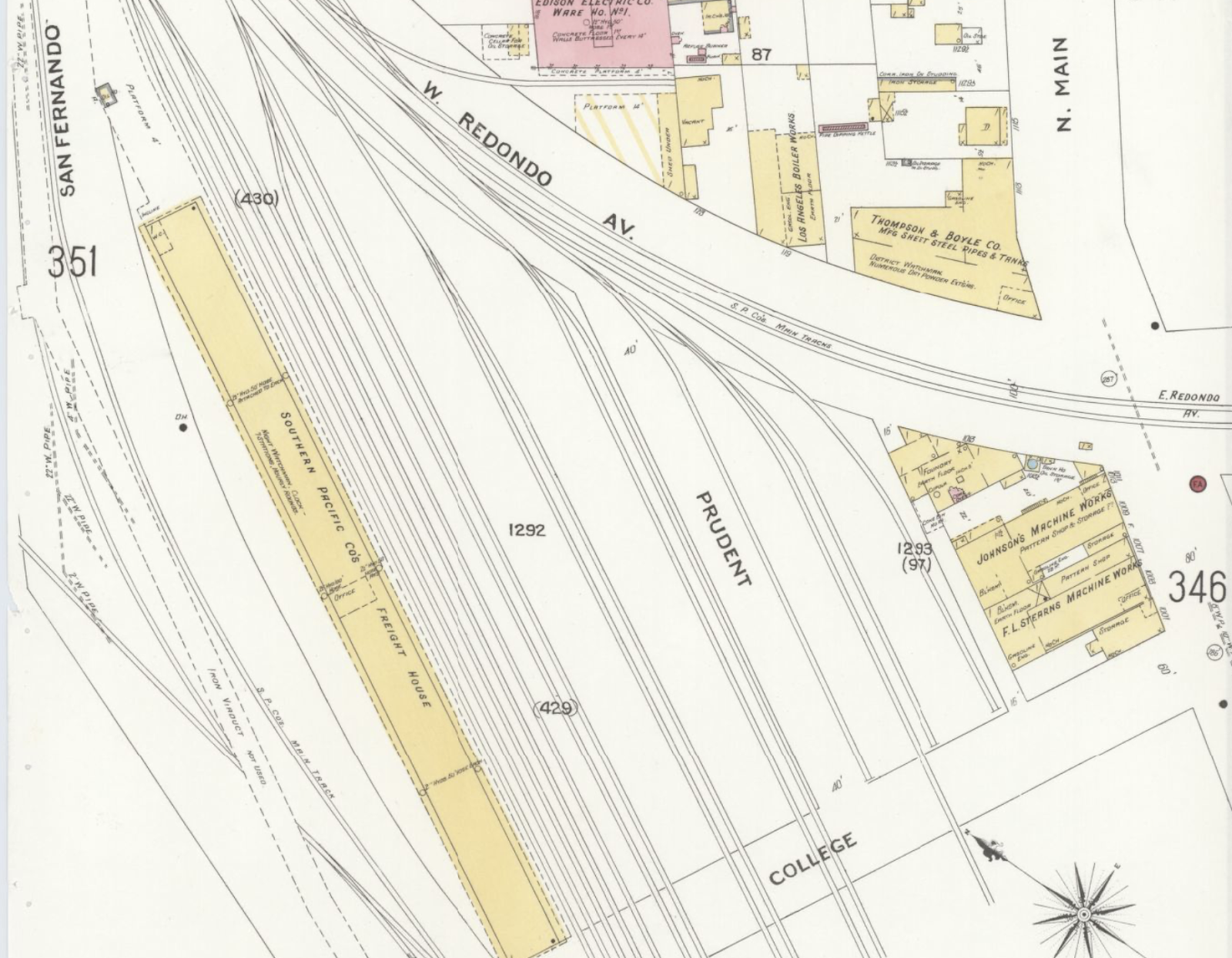Pierre Prévotière was an attorney from Paris.
Arriving in the US in 1900 at age 24, he made his way to Los Angeles by 1906. A newspaper excerpt stated he was in town "to study social conditions" and that he was going to establish a French library for the use of other French immigrants.
Pierre moved into the Hotel Melrose on Bunker Hill. He took a job as assistant editor of L'Avenir du Sud de la Californie ("The Future of Southern California"), a French-language weekly newspaper based in the Temple Building. (Old LA had so many French-language newspapers that I have held off on writing a separate entry about them because I know I'll have to update it, possibly over and over. I seem to unearth another newspaper at least once a year.)
 |
| 1906 listing for L'Avenir newsweekly |
1906 was an election year in Los Angeles. The Los Angeles Herald notes that French Angelenos were offended by a paid advertisement for S.T. Eldridge, who was running for County Supervisor (his district would have included the Second and Third Wards of Los Angeles, plus still-independent Hollywood). The Herald translates part of the advertisement thusly:
He seeks the suffrage of the French-speaking population because he is certain that he can satisfy their views concerning the free trade in wine and liquors in contrast to his opponent Dr. W.A. Lamb, who wages a determined war against the traffic.
Let us hope that he will be the candidate who shall have the voters' preference at the coming election.
The French community was insulted by the ad, and demanded an explanation from Mars. Can you blame them? Eldridge's campaign ad effectively reduced the French community to a bunch of boozers. While Prohibition did later play a role in scattering the French Colony, French Angelenos' interests have never been solely limited to their ability to produce and sell alcohol.
I'm not a journalist, but I'm pretty sure newspaper editors are supposed to remain objective.
Earlier that year, Mars joined the French Relief Committee that year, which raised funds for San Francisco earthquake survivors, although I can't say whether the sentiment was real or if it was just politically expedient to support the cause. Strangely, he was also the addressee of a suicide note left by French-Canadian printer Charles Malan. Malan checked into the Hotel St. Angelo, plugged the keyhole and doorway gaps with paper, turned on the gas, undressed, lay down on the bed, smoked a cigarette, drank two bottles of Burgundy, and waited. In the note, Malan said he was "disgusted with life and tired of being trouble to others." Malan's acquaintances stated that he was fairly successful and couldn't think of any reason for him to be suicidal (but you never really know what someone is going through).
Mars' misdeeds caught up with him in 1907.
For starters, his name wasn't Mars. He was known as Chavet in New York, then went by a different name in Mexico. Fluent in several languages, well-educated, well-traveled, highly intelligent, and adaptable, Mars may well have been an ideal con man.
Mars ran the newspaper La France in San Francisco, went to San Jose, wrote a book to commemorate President McKinley’s visit, allegedly bilked Santa Clara County out of $1500, and left town. Like so many other shysters before and after him, he came to Los Angeles.
By 1907, Mars had founded a daily paper, Progress (not to be confused with Le Progrés) and was President of the Liberal Alliance (a political organization geared towards LA's many foreign-born voters).
The working people of the Colony - druggists, grocers, butchers, saloon keepers, and so on - openly disliked Mars. People who work for a living tend to not like it when money isn't accounted for - especially when it's money they are owed.
You see, Mars was accused of selling a great deal of stock, using newly elected Mayor Harper's name to clinch the deal, and not turning in the money.
At the same time, Mars began pursuing his teenage stenographer, Madge Clark (and because this isn't creepy enough already, Mars was living in Madge's mother's boarding house). Mars was married with a daughter, and Clark was in love with a chauffeur, but that didn't deter Mars.
On the morning of March 30, 1907, Clark was speaking to the chauffeur at the corner of Franklin and New High Streets. Mars grabbed Clark, dragging her to the newspaper's upstairs office at 207 New High Street, and scolded the terrified teenager. Clark screamed. Fortunately, Justice Stephens had an office across the hall. Constable H.J. De La Monte and Deputy Charles R. Thomas responded and issued a warning.
Other people who worked in the building had noticed Mars was a little too interested in Clark, who was not at all interested in him.
Mars told the Los Angeles Times "This talk of jealousy is absurd. The girl is too young to think of being in love. I am particular about my employees being on time, and this morning she came late. That is all. There is no jealousy about it. Perhaps I was a little rough with her. She is very sensitive, hysterical, and she cried. Then the constables came. It is very unfortunate."
"Hysterical", my derrière. What's truly unfortunate is working for an abusive (and creepy!) boss, especially when they also live in your family's home.
A newspaper account briefly states that Clark ran off with the chauffeur, and wound up being detained by the police matron.
Between the fraud and the sexual harassment, Mars knew he was in trouble. He promptly skipped town, leaving his creditors in the lurch. Over a week later, he wrote to the newspaper's manager claiming he had left town to render services to the Progress Publishing Company. The rest of the paper's officials were glad to see him go, but not in the way he went, and were already taking steps to depose him (since he was technically still editor).
After the vile things he said and did, Mars had the nerve to return to Los Angeles later. Newspapers place him back in LA as early as 1921, he somehow became secretary of the French League, and he lived in LA until his death in 1927.
By 1922, he was editing yet another French newspaper, Le Courier Francais. Prohibition was now in full effect, but it was widely ignored in LA. Mars, who had vocally opposed Prohibition back in 1905, reached out to Assistant U.S. District Attorney Camarillo offering to personally ostracize any members of the French Colony who knowingly violated the Volstead Act (two Frenchmen were being held for that reason).
I'll just come right out and say it: the man wasn't just a con artist, a creep, and a fraud. He was a hypocrite, too.
Both L'Avenir and the French Library seem to have disappeared after the campaign ad controversy, and Mars' assistant editor Pierre Prévotière seems to have disappeared from Los Angeles by 1907. It isn't clear whether he finished his study on social conditions, but if anyone on either side of the ocean happens to stumble upon his work, please drop me a line. I surmise it's more enlightening than reading about his former boss' bad behavior.












